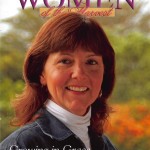Global workers often look forward with great expectation to going “home” to visit family. As parents they are eager to experience all the old familiar things and to share them with their children. Very quickly they realize that for their young children, going “home” is a foreign and often strange experience. Here are some of the many comments from our children, Rita and Carissa from our recent visits “home.”
We’re on the airplane and the flight attendant passes out old common pretzels. Rita asks, “What are these things? They look like they have faces. Can I eat them?
Upon our arrival to the airport she calls out with excitement, “Wow, carpet soft” (not only expressing her mixed-up grammar but also the fact that there is no wall-to-wall carpeting in Venezuela). She runs a few steps and then bends down to touch it exclaiming, “Feel it Mommy! Feel it!” Her sister takes up the suggestion and feels it, but just her hand is not enough. They begin to roll across the carpet as busy travelers pass them by. As we wait in line, the temptation is too great. The girls get down again, this time laying face down caressing the carpet with their hands. I have to explain to the staring people, “Uh, they haven’t seen carpeting in a long while.”
The adventure doesn’t stop. In the next corridor they are fascinated by the water squirting machines. “How do you do it?” “Can we really drink the water?”
Then into the bathrooms, “Look there’s toilet paper!” “Oh, but the sink is broken–nothing to turn it on” Then I show them how it works automatically—“WOW!”
While we wait in Miami they noticed all the different kinds of people. We are used to seeing thin, tan, straight-haired people (even if it’s naturally curly, Venezuelans generally straighten their hair). As we walk by an African-American woman with an afro, Rita comments in a loud voice “What happened to her hair?” Fortunately the woman just laughs as I try to explain her comment, only making the situation worse. Then there are more comments like, “That man’s really black and look how fat they are!!” Embarrassed, I try to quiet the remarks and think to myself, “Time for some quick lessons on accepting diversity.” Later in the trip the curiosity continues with questions like “What’s a China person?”
We finally get off our last airplane. Carissa in sweet honesty looks at the crowd of people and asks, “Which one is Grandma?” My heart feels a touch of sadness but quickly lifted by the thought, “Soon she will know not by a photo but by a hug.”
At church the “curious and strange” things continue to happen. “All the people talk English. They even sing in English!” Amazed Rita comments, “How come so many people know my name?” But she is convinced that they don’t know how to spell. In her Venezuelan preschool she is called by her full name “Margarita” and has learned to recognize that name when it is written. So when she leaves Sunday School class with a paper that says “Rita” she remarks with sad eyes, “They wrote my name wrong.”
Throughout our stay other little things happen that just didn’t make sense to the girls. When we went to the gas station, my father got out to pump the gas. Rita comments, “I didn’t know Grandpa works at the gas station.” In Venezuela we only have full-service stations. They are fascinated by “squares” in the trees. “No, no Rita,” I correct, “it’s ‘squirrels.’” Well, can I keep a “square”? “No, they don’t like to go on airplanes,” I explain. Then there are the “light bugs.” What excitement to catch them at night! Rita devises an entire plan how she will bring on the airplane with us a Mommy and a Daddy lightning bug in a jar with plenty of grass. They will then have lots of babies so we can have lightning bugs in Venezuela, too.
Well, the bugs and the “squares” all stay behind but the memories of that curious place Mommy calls “home” remain. Maybe next time we go back they’ll figure out how and why letters appear in the mailbox every day and be convinced that it really is O.K. to drink the tap water. Best of all, they won’t need to ask which one is “Grandma.”
©2005 Thrive
View the original print magazine where this article was 1st published.


